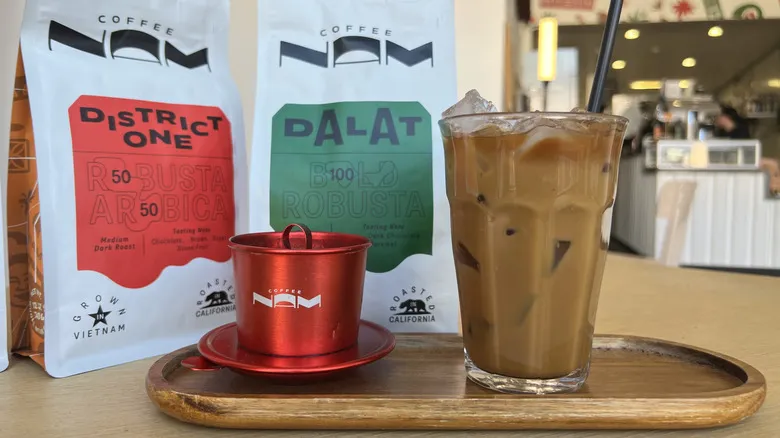Tools and ingredients you need to make Vietnamese coffee
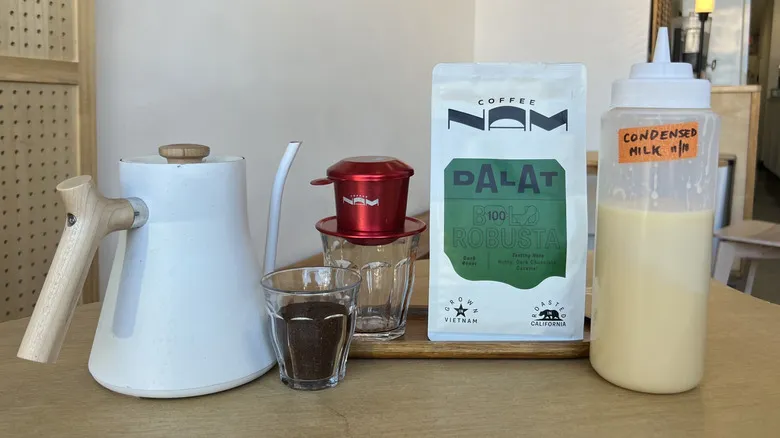
Vietnamese coffee is typically brewed with a phin filter, which is a small coffee filter often made of stainless steel or aluminum, though ceramic versions are also available. The filter comprises four parts: a perforated plate, a perforated chamber that rests on top of the plate, a press, and a lid.
You can easily find phin filters on Amazon, and Vietnamese-American coffee brands like Nam Coffee and Nguyen Coffee Supply offer them as well (they make excellent gifts for coffee enthusiasts). If you don’t have a phin filter, you can still prepare Vietnamese coffee using ground espresso or pour-over coffee grounds, but you'll need to modify the amount of condensed milk you add — espresso will yield a stronger brew compared to phin-filtered coffee, while pour-over will be milder.
Our demonstration utilizes a phin filter, but the other necessary items are quite simple. All you need is ground coffee, condensed milk, a glass of ice, and a spoon for mixing everything together.
Step 1: Prepare ground coffee
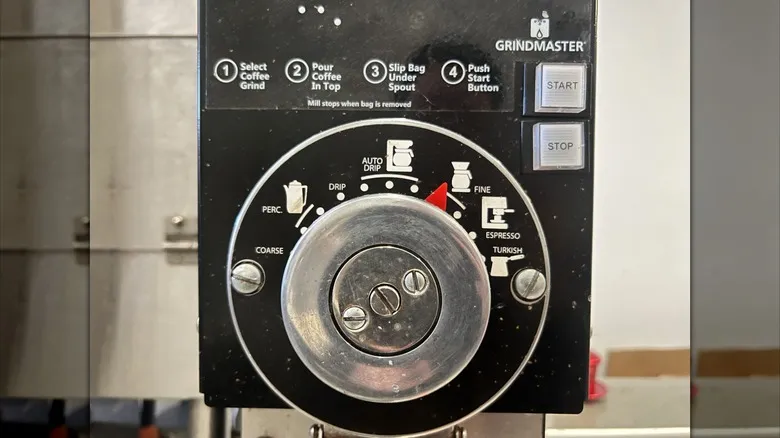
The journey begins with preparing ground coffee for brewing. Coffee worldwide is primarily divided into two types: arabica, known for its smoother flavor, and robusta, which has a bolder taste. Vietnam predominantly produces robusta, and traditional cà phê s?a dá is made with 100% robusta coffee. Ideally, you would want to source some Vietnamese robusta, so it’s worth checking if any local roasters import beans directly from Vietnam.
Ultimately, the coffee you select comes down to personal preference. Currently, Vince Nguyen opts for Nam's District One coffee, which is a blend of 50% robusta and 50% arabica. If you're using a phin filter, a fine or medium-fine grind is recommended. To prepare a single serving of Vietnamese coffee, begin with 25 grams of ground coffee.
Step 2: Set aside the condensed milk
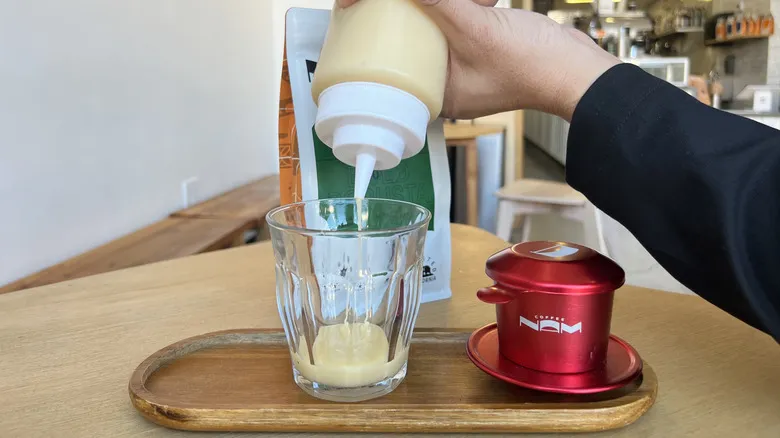
Next, add some condensed milk to the empty glass or cup that will catch the coffee drip. Nguyen suggests using 20 grams of condensed milk for a single serving. As you become more familiar with the process, feel free to modify the amount of condensed milk to suit your preference.
Step 3: Pour ground coffee into the phin filter
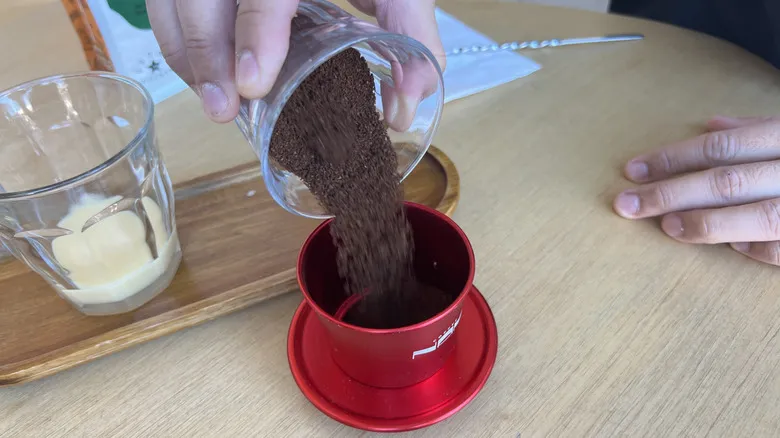
Add the ground coffee to the open phin filter chamber. At this stage, gently even out the coffee grounds within the chamber, but avoid pressing them down. Position the chamber on the perforated plate, and then set the entire setup on top of the glass containing condensed milk.
Step 4: Pour a small amount of hot water to bloom the coffe

Next, bring your water to a boil — you'll require 120 grams (approximately 4 fluid ounces) for one serving. After boiling, pour just enough water into the filter to allow the coffee to "bloom" — about 25 grams (a little under an ounce), more or less. Be careful not to pour too much, as you want to avoid any dripping at this stage.
Allow the coffee to bloom for 25-30 seconds. This step, done prior to brewing, helps release carbon dioxide, enhancing the flavor of your final brew, since carbon dioxide can impart a sour note.
Step 5: Press the coffee down
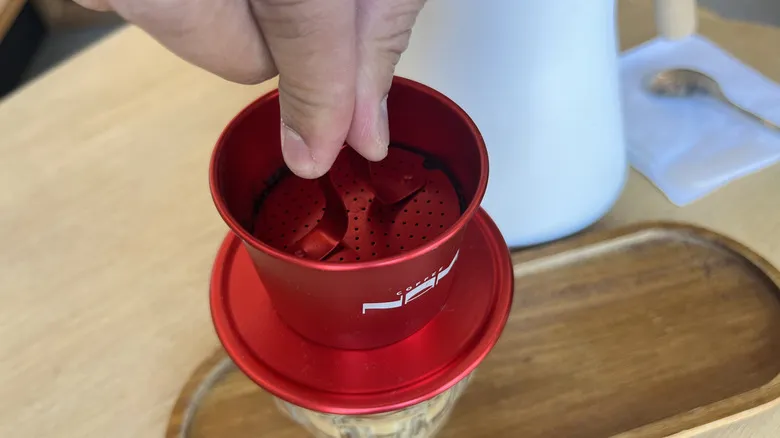
Once the coffee has bloomed, carefully press down on the coffee grounds with the filter press. Keep the press in place for the following steps.
Step 6: Pour in hot water
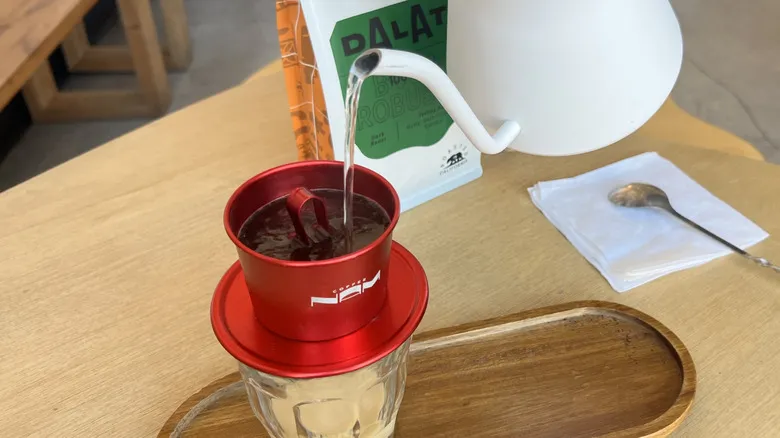
Next, fill the filter chamber with hot water until it reaches the top. You won't need to use all the boiled water at this stage, but you'll save the remainder for later.
Step 7: Wait for brewed coffee to drip
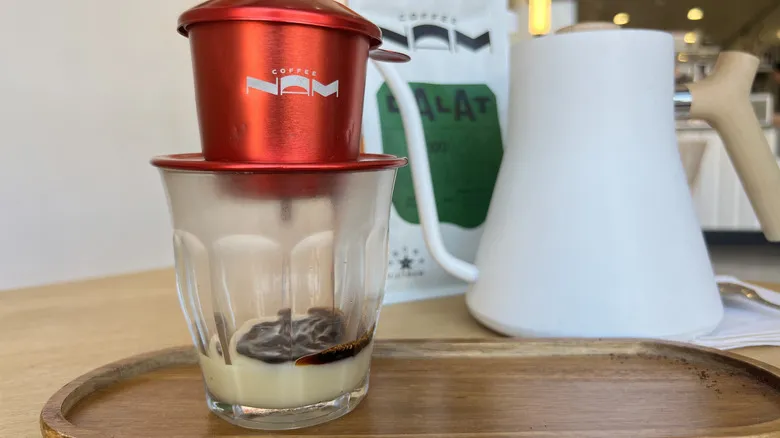
Once you've filled the filter chamber with water, reattach the lid and allow the coffee to drip slowly into the glass. This process may take around a minute, but it's all part of the phin filter's intended function. The slow extraction of the coffee's flavor and aroma is what sets Vietnamese coffee apart. Keeping the lid on the phin filter while it drips helps maintain the heat of the water and coffee.
Step 8: Pour hot water a second time
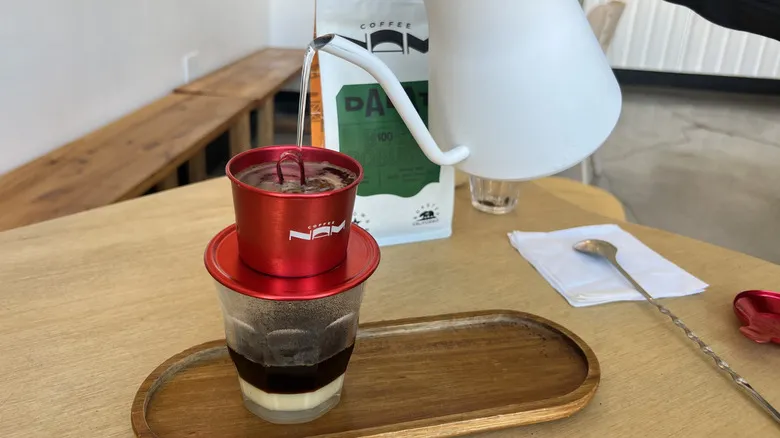
Once the coffee from the initial pour has fully dripped through, refill the filter chamber and allow the coffee to drip again. If you prefer a bolder flavor, you can reduce the amount of water used (or increase it if you wish to weaken the coffee a little).
Step 9: Stir coffee and condensed milk together
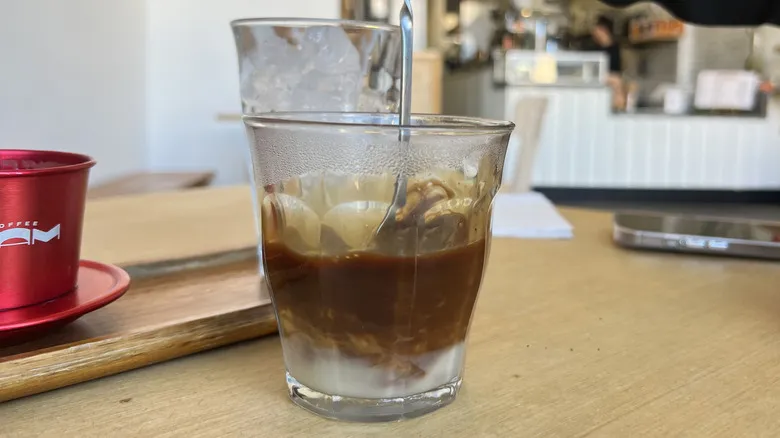
After the coffee has completed brewing, just mix it with the condensed milk in the glass, ensuring they are well combined. The coffee will be very hot, so it should blend together effortlessly.
Step 10: Pour mixture into a glass of ice
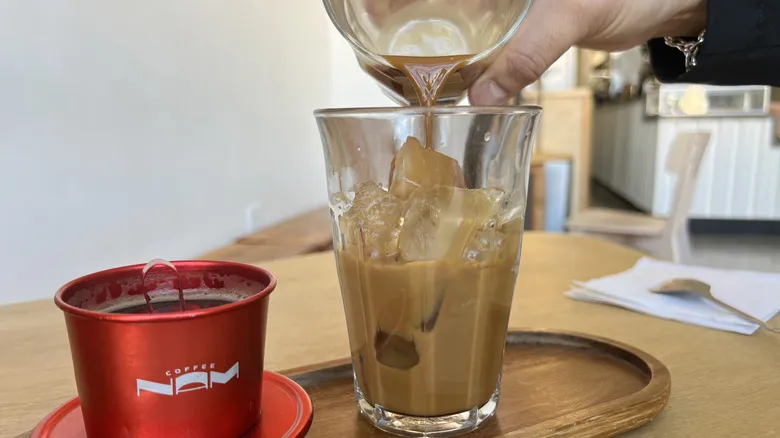
To finish, take a larger glass filled with ice and pour in the coffee and condensed milk mixture. After all, it wouldn’t be cà phê s?a dá without the dá (ice). The ice not only provides a refreshing chill (since most of Vietnam has warm weather throughout the year), but it also helps to mellow out the drink's intensity and sweetness.
Remember, the measurements provided here are perfect for your first attempt at making Vietnamese coffee, but don’t hesitate to tweak them to match your taste as you become more familiar with the process. The key is to create a beverage that you truly enjoy.
Recommended

You Can't Have A Perfect Cup Of Decaf Tea Without Dumping It Out First
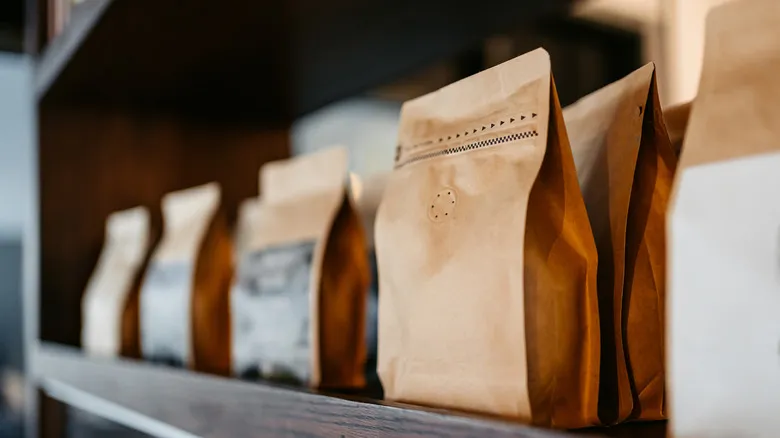
The Expert Guide To Coffee Bean Labels

Harvest Date Vs Roast Date: Which Matters Most For Buying Coffee?
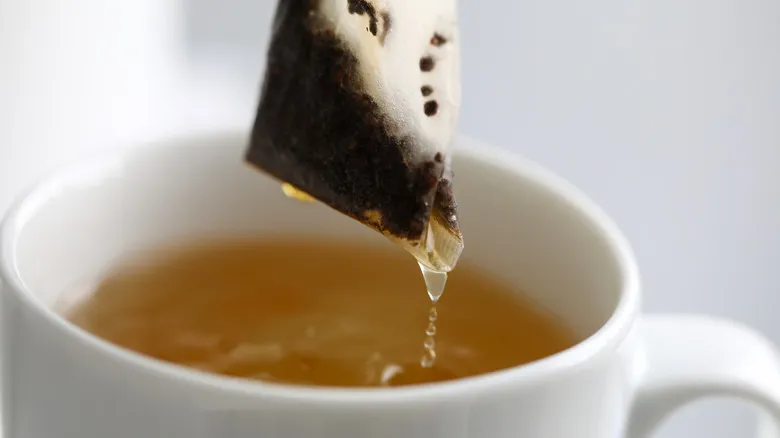
Scientists Figured Out How To Prevent Film From Forming On Your Tea
Next up

